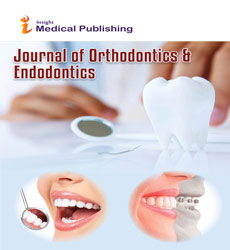Abstract
Review of the Importance of Aerosol Reduction and Proper Infection Control
The goal of this article to educate dentists, hygienists, and assistants on the importance of aerosol reduction and proper infection control.
While treating the patients with ultrasonic or high-speed handpiece, aerosols and spray are formed. Aerosols can remain airborne for extended periods of time and may be inhaled. Aerosols consist of particles less than 10 microns in diameter and are not typically visible to the naked eye. About 95% of aerosols are 5 micrometers or less. Most aerosols lie within 1m in front of the patient.
A high-volume evacuator (HVE) is a suction device that draws a large volume of air over a period of time. This differs from a low-volume evacuator (LVE), which pulls a significantly lower volume of air. HVE devices typically have large, single-bore or multiple openings, whereas LVE devices have a much smaller bore size. HVE remove 90-98% of aerosols regardless of source. An HVE device (left), a saliva ejector (center), and an HV evacuation mirror (right) are used to draw up the salt particles at the same speed (pic.1). Note the differences in the widthoftheirpaths. Safety precautions/infection control measures (during any hand piece, ultrasonic, or polishing).
Risk of exposure is significantly higher for dentists and hygienists using powered instrumentation such as ultrasonic and air polishers. Bacteria and viruses can spread rapidly through splatter and aerosols produced by these types of treatments. Aerosol particles can linger in the operatory for an hour or more while splatter lands on the surfaces immediately surrounding the treatment area. This poses a risk for the spread of the common cold and influenza viruses, herpes viruses, pathogenic streptococci or staphylococci, severe acute respiratory syndrome (SARS), and tuberculosis (TB).
As there is no single solution that will provide complete protection, a combination of personal protective equipment (PPE), preprocedural rinses, prepolishing, an advanced air filtration system, and an HVE offers the most effective and practical method of reducing the overall risk of infection.
The dental office required that clinicians use PPE, such as masks, gloves, eye protection, and proper lab coats; however, the office did not require a HVE as recommended in the CDC guidelines as a part of its safety protocol for working with powered instruments. Saliva ejectors and isolation devices offer no safety protection from contaminated aerosols.
Additional Precautions. Change masks every 20 min in high aerosol environment, every patient, or every hour. Mask levels
include 1-3: the higher the mask level, the more protection Against aerosols, more filtration but less breathable.
Author(s):
Peshkova Ella
Abstract | PDF
Share this

Google scholar citation report
Citations : 265
Journal of Orthodontics & Endodontics received 265 citations as per google scholar report
Abstracted/Indexed in
- Google Scholar
- China National Knowledge Infrastructure (CNKI)
- Cosmos IF
- Directory of Research Journal Indexing (DRJI)
- WorldCat
- Geneva Foundation for Medical Education and Research
- Secret Search Engine Labs
- Euro Pub
Open Access Journals
- Aquaculture & Veterinary Science
- Chemistry & Chemical Sciences
- Clinical Sciences
- Engineering
- General Science
- Genetics & Molecular Biology
- Health Care & Nursing
- Immunology & Microbiology
- Materials Science
- Mathematics & Physics
- Medical Sciences
- Neurology & Psychiatry
- Oncology & Cancer Science
- Pharmaceutical Sciences

